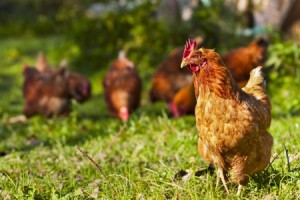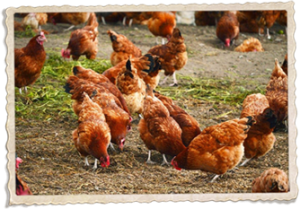“The pecking order.” It’s a term you’ve likely heard before, especially if you’ve ever worked in an office setting. While the phrase has been used to describe the human social order, it was originally intended for chickens, not humans. First coined by Thorleif Schjelderup-Ebbe, the pecking order is the best way to understand the social dynamic of your flock.
What is the pecking order?
Put simply, your chicken’s pecking order is the way in which your birds arrange their social standing in the flock. It’s a hierarchy meant to organize a flock with a head rooster on top and other chickens below. Similar to humans, the chickens closer to the top of the pecking order get the best resources (food, water, etc.) while those at the bottom get the worst.
In general, there are three types of social hierarchies inside your flock. They are as follows:
- Between roosters and other roosters
- Between hens and roosters
- Between hens and other hens
Roosters and hens can move up and down the hierarchy, or pecking order. Roosters, for instance, can mount campaigns against current leaders, almost like a coup. If they’re successful in that campaign, the new rooster is the big man in charge, while the old rooster goes down a few pegs on the pecking order. Additionally, if a bird ages or becomes sick, they move down the hierarchy as younger, healthier chickens take their place.
Why does a pecking order form?
We would love it if our chickens could live in an egalitarian society, but unfortunately that will never happen. The pecking order may seem a bit harsh to us humans, but it exists for a reason. It helps to keep the peace from threats outside and within. The head rooster is the strongest and healthiest among them. As such, it’s responsible for protecting the flock from predators. Plus, with a hierarchy that’s established early on, in-fighting is kept to a minimum (there are few organized rebellions within a flock).
How does a pecking order form?
Pecking orders develop early. You will start seeing the signs when chicks are around six months of age. During this stage, chicks will start rushing at one another, bumping chests, and flaring their feathers. This is all an attempt to intimidate other flock mates and ensure a higher position on the pecking order. Once your chicks leave the brooder, they will have established a pecking order of their own.
How to manage your flock
While the pecking order is meant to minimize conflict within your flock, there are moments when it can actually cause it, namely when you’re introducing new chickens. To prevent a fight from breaking out, you’ll want to gradually introduce your new chickens to the flock. Do this by keeping them in a fenced off area for the first few days or weeks. Then, after those days have passed without incident, let them mingle with the rest of the flock while you supervise.
For more tips on manage your backyard chickens, contact Chickens for Backyards today at 888-412-6715.

